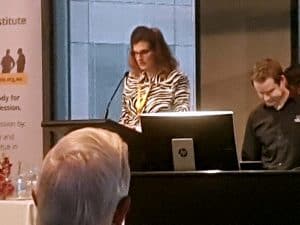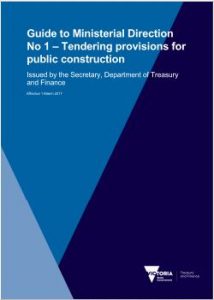 WorkSafe Victoria’s Executive Director, Health and Safety , Marnie Williams, has had a horrid week. Last Saturday, while being ill with a cold, she stood in for the Victorian Industrial Relations Minister at a Migrant Worker Forum, at which she was asked “what you gonna do about it?”. However she continues to make herself available, a crucial element for any leader of a regulatory agency.
WorkSafe Victoria’s Executive Director, Health and Safety , Marnie Williams, has had a horrid week. Last Saturday, while being ill with a cold, she stood in for the Victorian Industrial Relations Minister at a Migrant Worker Forum, at which she was asked “what you gonna do about it?”. However she continues to make herself available, a crucial element for any leader of a regulatory agency.
Farm Safety
A couple of days later at a safety conference run by the Safety Institute of Australia, SafetyAtWorkBlog accused WorkSafe of not doing enough about the safety of Victorian farmers. Williams rejected the accusation and forecast a new, and surprising, approach for agricultural safety.

 I have written before about the use of
I have written before about the use of  monwealth. Legislative change has a smooth journey when political stars are aligned, where the same political party is in power at State and Federal levels. Federal change is even smoother when the same political party has control of both houses of Parliament. Not surprisingly, this ultimate combination is rare and could be as damaging to occupational health and safety (OHS) as it can be beneficial. The recent OHS harmonisation process is a good example of a political mess.
monwealth. Legislative change has a smooth journey when political stars are aligned, where the same political party is in power at State and Federal levels. Federal change is even smoother when the same political party has control of both houses of Parliament. Not surprisingly, this ultimate combination is rare and could be as damaging to occupational health and safety (OHS) as it can be beneficial. The recent OHS harmonisation process is a good example of a political mess. Innovation in occupational health and safety (OHS) is often encouraged by government but government processes and policy can also discourage and limit this. An obvious example is where government insists on compliance with OHS laws in its tendering criteria but acknowledges that the tender safety criteria remains outdated and, privately, that OHS compliance is not enough to ensure a safe and healthy workplace.
Innovation in occupational health and safety (OHS) is often encouraged by government but government processes and policy can also discourage and limit this. An obvious example is where government insists on compliance with OHS laws in its tendering criteria but acknowledges that the tender safety criteria remains outdated and, privately, that OHS compliance is not enough to ensure a safe and healthy workplace.